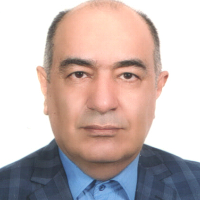Aerospace: A Scientometrics Study and Centrality Indicators Analysis of Researchers' Co-authorship Network
The aerospace industry and technology are always considered one of the most important and valuable industries due to their special and unique features and applications. The field of aerospace research is a priority in the grand strategies of science and technology development, and it is essential to focus on it. Aerospace researchers and experts play critical roles in advancing aerospace science and industry. They are responsible for conducting scientific and industrial activities as well as research. Evaluating the research performance and quality of aerospace researchers at the international level is crucial. The current research aims to study scientometrics and analyze the centrality metrics of the co-authorship network of aerospace researchers at the international level. This will be done using data available on the Web of Science Core Collection (WOSCC).
The research conducted is of an applied nature, employing an analytical approach. In this article, the technique of network analysis has been employed to visualize the network of co-authorship at both the micro and macro levels. This includes analyzing the social network of co-authorship among researchers and their organizations, as well as examining centrality indicators and conducting network analysis of researchers' research topics. The current research community includes all aerospace researchers, with 153,994 records indexed on the Web of Science Core Collection (WOSCC) from 1945 to 2021. There are 161,156 aerospace researchers, of which 6,706 were anonymous and were excluded from the research population. Therefore, 154,450 researchers were included in the study. Data Lab was used to accurately extract data for aerospace researchers. Ravar PreMap was also used to standardize data and prepare a square matrix for researchers. The symmetric correlation matrix of researchers (AU) was obtained using Bibexcel and Netdraw. Then, the required centralities were calculated. Co-authorship maps were also created using NetDraw. Co-authorship network analysis technique was used for data analysis. A 157×157 matrix was considered to identify keywords that appeared with a frequency of 70 or more. This matrix was used to create a network of commonly researched topics among researchers. VOSviewer version 1.6.18 was used to visualize co-authorship networks.
The density of the co-authorship network among aerospace researchers is low, and the network exhibits low cohesion. In the current research, five clusters of collaboration were identified, with the center consisting of prominent researchers in the field of aerospace. "David A. Fulghum" of the Maritime Center in America published 863 articles in the field of aerospace between 1983 and 2003. "Florian Menter" from Ensys Germany has the highest number of citations (excluding self-citations) for published articles in the aerospace field. Out of 87,778 keywords identified in the Web of Science Core Collection (WOSC C) in aerospace, 9712 were associated with Florian Menter. Additionally, a map was prepared using 157 keywords that had a frequency of 70 or more. The co-word clusters of the aerospace network consist of seven topic clusters, 157 nodes, 2679 edges, and have a density of 0.11. The first cluster was a hot topic discussed in the aerospace industry, and the most frequently mentioned topic, "Aircraft," is associated with cluster 3. The most prominent topics are aerodynamics, flight control, and vibrations. The most significant scientific collaboration of aerospace researchers is between Giovanni Mengali and Alessandro A. Quarta from the University of Pisa, Italy. The most scientific advancements in aerospace research have been published in the fields of aerodynamics, flight mechanics, control, and vibrations. After the United States, China had the most scholarly communications with other countries.
Developing science policy and advancing strategic plans and programs for aerospace research require comprehensive and accurate information about researchers' potential scientific and technical abilities. The involvement of prominent aerospace researchers in communication and scientific collaborations has resulted in the establishment of significant international partnerships in the aerospace industry. In order to effectively participate in robust and cohesive scientific collaboration networks, it is necessary to enhance communication among researchers, research centers, and countries, and leverage their synergistic capabilities. The present research results are utilized in the science, technology, and innovation policies of the aerospace industry. It is also used in the planning and direction of applied research, as well as in the application of research conducted by aerospace scientific associations, universities, research institutes, and aerospace industry organizations. Additionally, the results obtained from this research can be used to expand international cooperation among aerospace researchers. Another application of the results presented in this article is the optimal utilization of experts and meticulous planning for the establishment and growth of specialized clusters of aerospace researchers. Prominent aerospace researchers have facilitated the establishment of scientific collaborations and significant partnerships at the international level. Nevertheless, in order to establish stronger and more cohesive scientific collaboration networks, it is essential to prioritize the exploration of potential connections among researchers, research centers, universities, and countries, as well as their synergistic capabilities.
-
Challenges of Research Performance Evaluation in Iran: A Qualitative Study
Nadia Saniee, Shahram Sedghi, , Salime Goharinezhad, Leila Nemati Anaraki *
International Journal of Information Science and Management, Winter 2025 -
Note from the Editor-in-Chief: Post-Publication Open Peer Review Model: An Opportunity or a Challenge for Scientific Journals?
Scientometric research journal,


